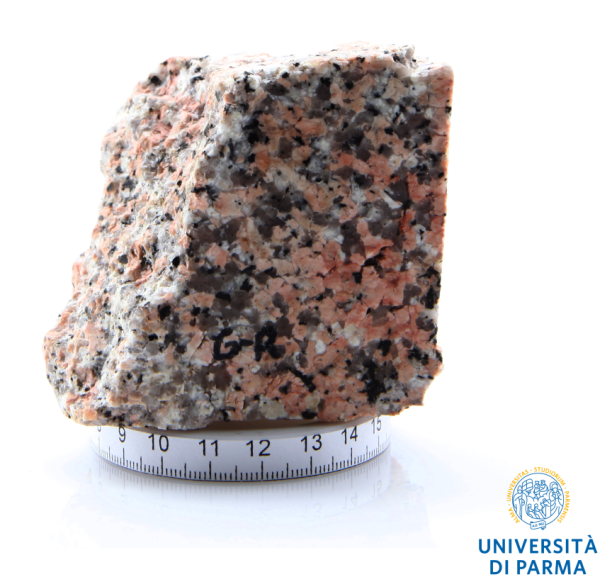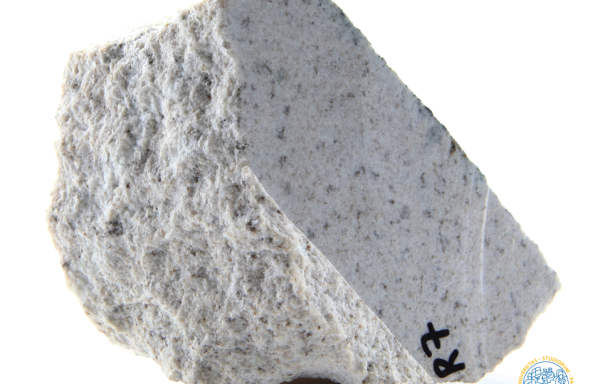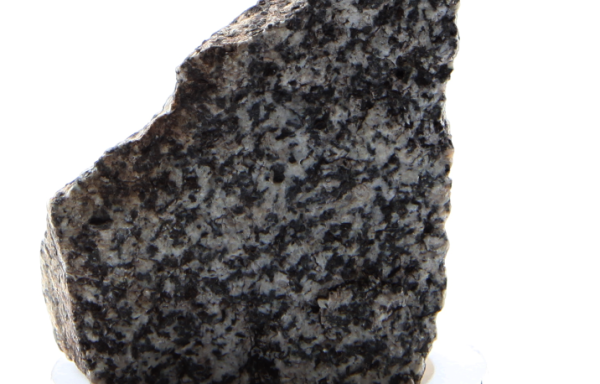Rock
Phaneritic rock with the constituent minerals easily identified by the naked eye: quartz (grey crystals; note that single quartz grains are colourless, but appear grey in the rock sample as they are surrounded by other coloured minerals); plagioclase (grains with a milky white aspect); alkali feldspar (pink grains); biotite (black grains with a very shiny lustre). The sample comes from the Baveno granite that, together with other small plutons (e.g., the Montorfano granite), was emplaced in the basement rocks of the western Southern Alps (“Serie dei Laghi”) in the Early Permian (270-280 Ma; Schaltegger and Brack, 2007; DOI 10.1007/s00531-006-0165-8). The Baveno pluton is extensively quarried and is known all over the world as “Granito Rosa di Baveno” because of its widespread pink coloured feldspar grains.
Etymology: the term granite comes from the Latin granum (grain).
Thin section description:
The main minerals of the rock are quartz and feldspar (i.e., plagioclase and alkali feldspar), which can be easily recognised in PPL view: quartz (Qz) occupies the clear areas; the plagioclase (Pl) crystals appear slightly dusty while the alkali feldspar (Afs) crystals are strongly dusty because of the widespread alteration in sericite. The Pl crystals are often twinned in the XPL view and may exhibit zoning. The crystals showing the light to dark green pleochroism in PPL view are partly chloritized biotite (Bt); the dark haloes seen in the biotite crystals are around minute zircon inclusions and formed from the decay of radioactive elements (Th, U) within the zircon.
| thin section PPL |
thin section XPL |
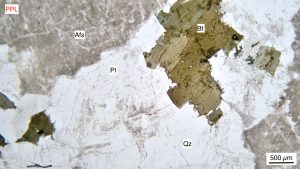 |
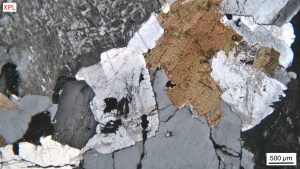 |
Map
PPL
XPL
Info
| Place: | Baveno, Lago Maggiore |
| Classification: | Granite |
| Specimen n°: | G-R |

